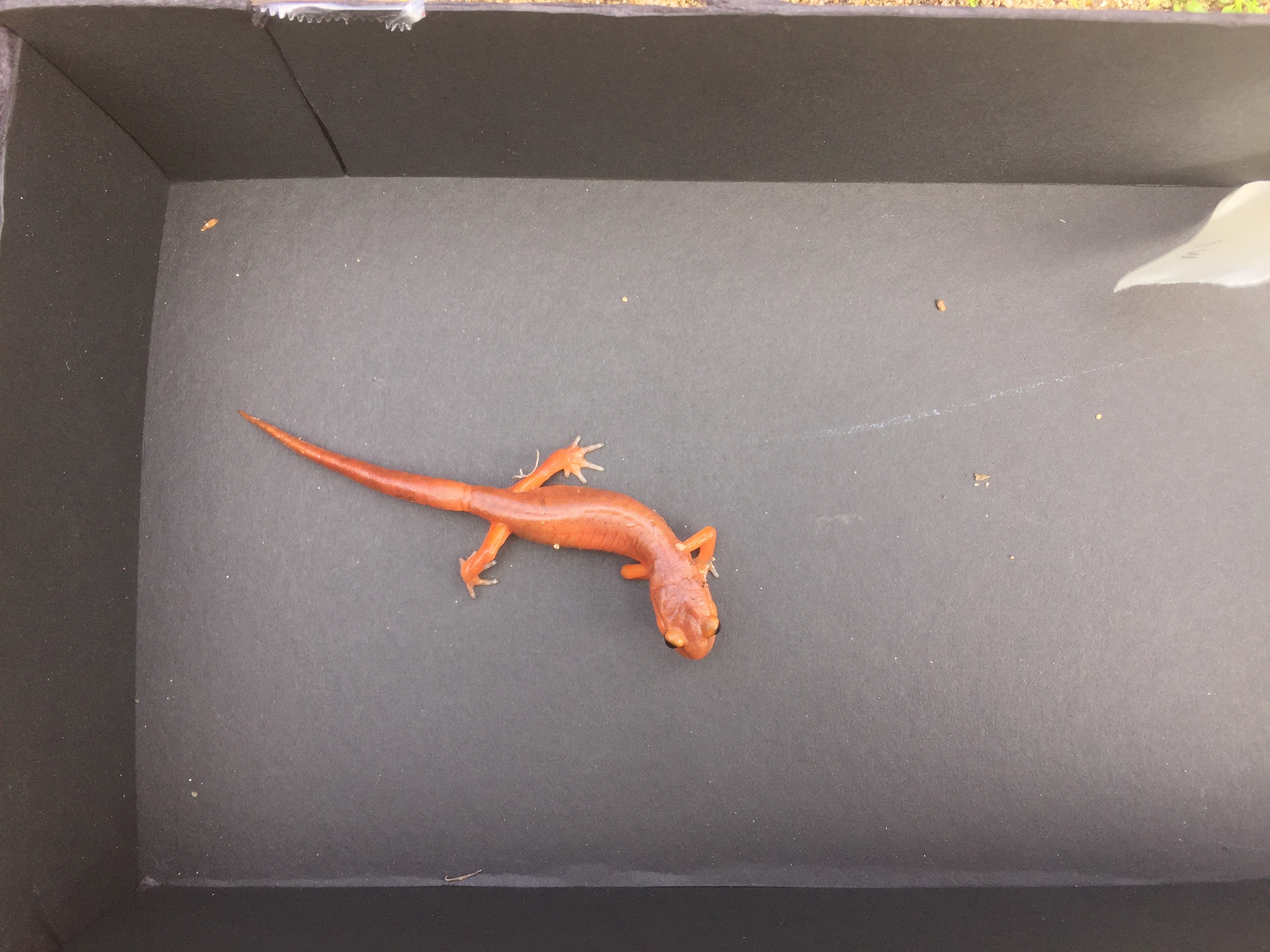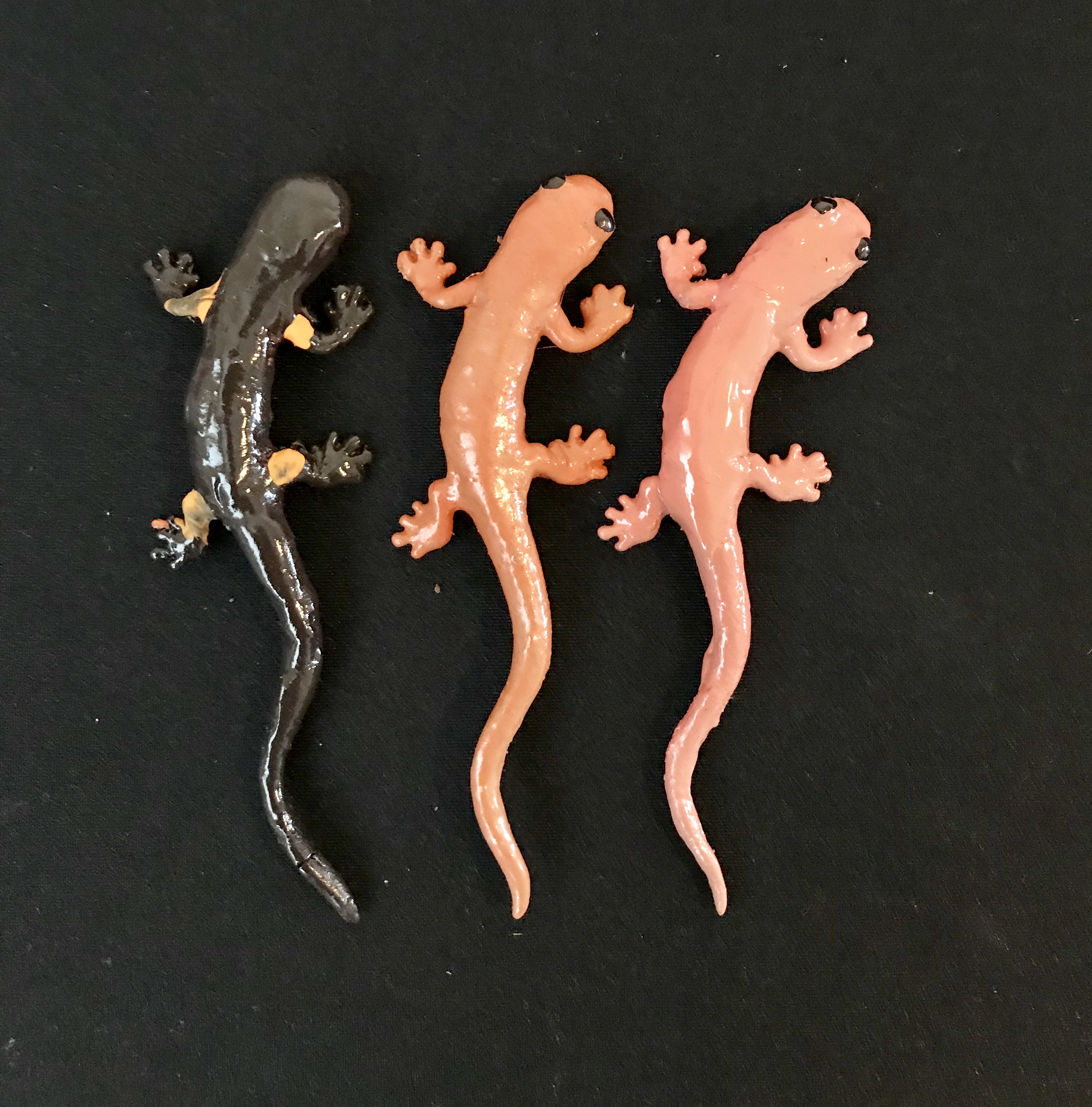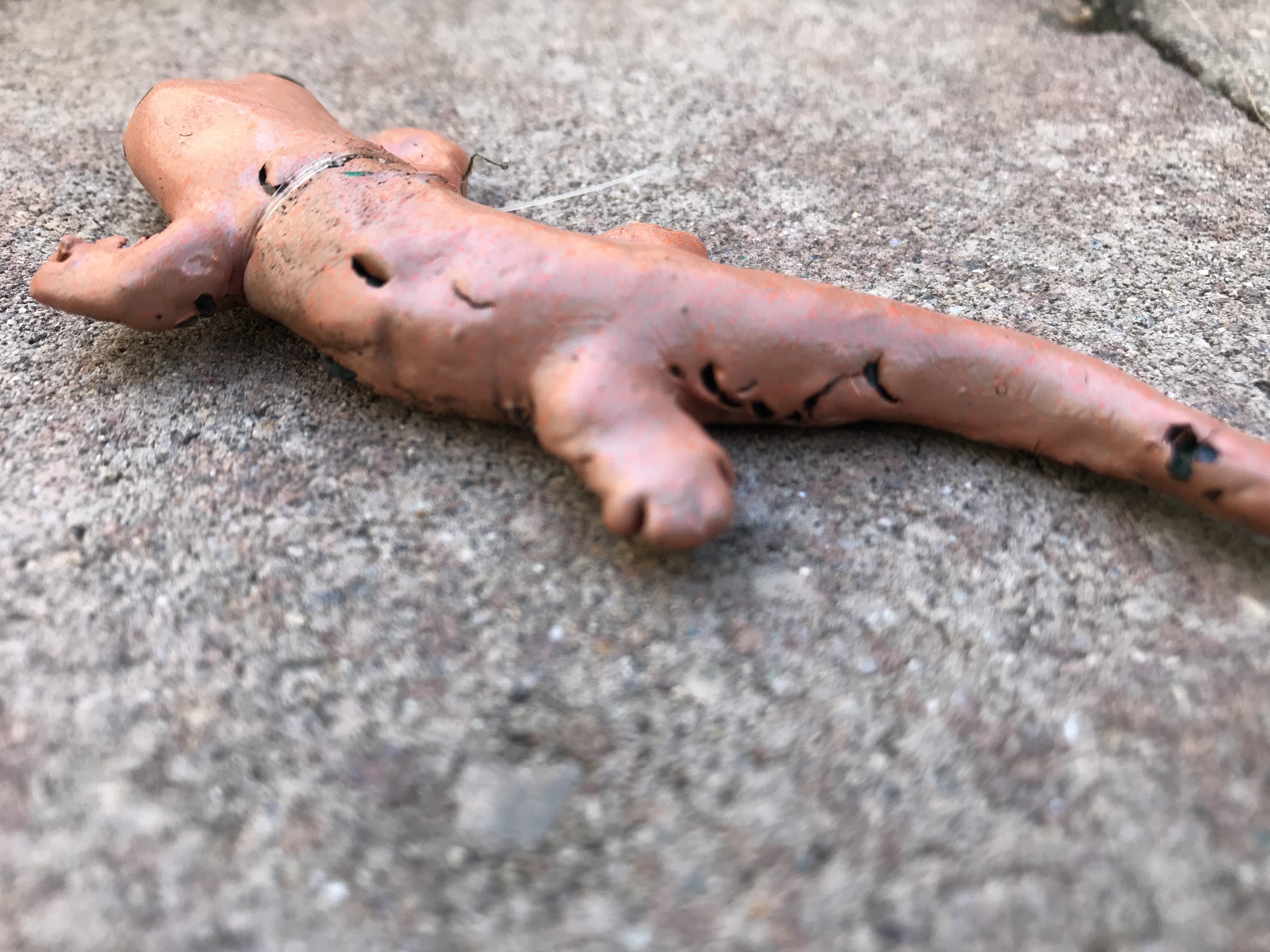Species often blend into their environments because predators eat individuals that are unable to blend in. Thus, color changing mutations are usually detrimental to survival. However, mutations can sometimes cause individuals to match the color of their environment better than their current coloration. The individuals with the new mutation would be more difficult for predators to spot and would increase in number over time. This is natural selection for crypsis, or background matching.
Natural selection for crypsis often creates different color patterns in different environments. One example is the Ensatina eschscholtzii salamander complex, which consists of multiple salamander subspecies distributed in different habitats from British Colombia to Baja California. Ensatina across the range have regionally specific cryptic coloration to avoid predators. Because of this variation Ensatina are a great model organism for studying how natural selection might affect an organism’s coloration.

In coastal California, the Oregon Ensatina (E. e. oregonensis) and the Monterey Ensatina (E. e. eschscholtzii) are darkly colored to match the dark substrate of the redwood forest understory where they occur. However,
at Fort Ord Natural Reserve in Monterey County, CA, a leucistic (pale pink) morph and an orange morph of the Monterey Ensatina occur at high frequency. The presence of these brightly colored morphs is surprising in a generally dark salamander subspecies.Fog and sandy soils characterize the maritime chaparral habitat at Fort Ord. Normally, leucistic animals, which are animals that have partially lost their pigments, rendering them paler than usual, of any species are less cryptic and are eaten more often by predators. Leucistic animals are often rarer in nature comparative to normally pigmented individuals. I hypothesized that this population has had or is experiencing strong selection for crypsis to match the light, sandy backgrounds where they occur.

Orange morph Ensatina from Fort Ord
To test my hypothesis, I had to understand how often predators attacked brown (normal), leucistic (pale pink) and orange Ensatinas. I measured the relative predation rates among brown, orange, and leucistic Ensatina morphs through a clay model experiment. I created models using a plastic green salamander that I coated in black non-toxic modeling clay and colored according to each model type. I put the models out at night, since these salamanders are largely nocturnal. I placed 80 clusters of three models, each cluster containing one of each morph, randomly throughout the reserve. I covered the four most common habitat types on the reserve: oak forest, chaparral, grassland, and open shrub.

Brown, orange, and leucistic Ensatina clay models.
I deployed a total of 240 clay models on either a light-sand or dark-dirt/leaf litter background and recorded predation events by documenting imprints in the clay left by predators. When predators such as rodents or birds attack the models, they leave indentations that can be identified.
I found that brown morph models have a lower overall predation rate than the two lighter colored morphs and have comparable predation rates on both light and dark substrates. These results imply that something other than background contrast may be preventing predation in these morphs. One possibility is disruptive coloration. Brown morphs have orange patches on their leg joints. These orange patches may make it harder for predators to find the outline of the salamander, thus adding to their crypsis.

Ensatina clay model showing predation marks from rodents.
While brown morphs had the lowest overall predation rates, the leucistic and orange morphed salamanders had the lowest predation rates when placed on the light sands. This is evidence that their coloration may be an adaptation for crypsis. Lighter colored morphs of Ensatina salamanders may be under natural selection for crypsis, particularly on the lighter colored dune sands in the Fort Ord region. These findings add to our understanding of both the maritime chaparral habitat and the Ensatina salamander complex.
Thank you to the Norris Center for helping fund my project.
